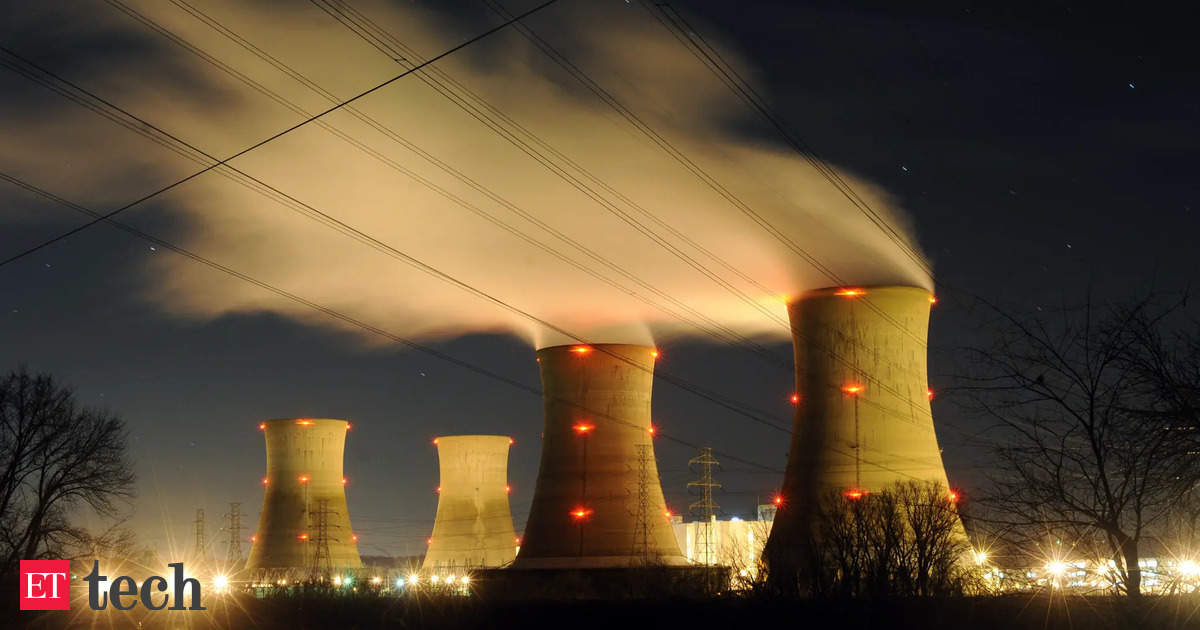Japan switched off nuclear power after 2011 war Fukushima disasterbut with the G7’s dirtier energy mix, it is trying to reduce emissions, and atomic energy is making a steady comeback, thanks in part to AI.
At the 400-hectare KK plant, shown to AFP in an exclusive tour, the 15-meter wall is just a measure to prevent another catastrophe and reassure public opinion and Japan’s nervous neighbors.
“We believe that (a Fukushima-like accident) could be largely avoided,” Masaki Daito, deputy superintendent of the KK, told AFP. Japan now has “the strictest (regulatory) rules in the world.”
The facility in central Japan – like the nation as a whole – is no stranger to earthquakes, having been closed for two years for “upgrades” after a major shake in 2007.
In Fukushima, a 15-meter tsunami severed power lines and flooded backup generators, disabling water pumps needed to keep nuclear fuel cold.
Discover the stories of your interest
In the worst nuclear accident this century, three reactors melted down and hydrogen explosions blew off roofs and released radioactivity into the air. To keep the power running in the event of an earthquake, KK has new backup power supply vehicles on higher ground, plus “blowout” panels and a new vent intended to filter out 99.9 percent of radioactive particles. .
In addition to the recently constructed seawall, an embankment has been widened and reinforced. In the hallways inside the reactor building, luminous stickers mark pipes and faucets.
“All the lights went out in Fukushima and no one could see,” Daito said.
Climate goals
Before the 2011 earthquake and tsunami, which killed about 18,000 people, nuclear power generated about a third of Japan’s electricity, with fossil fuels providing most of the rest.
All 54 reactors in Japan, including those at KK, were subsequently shut down. To keep the lights on, resource-poor Japan has increased imports of natural gas, coal and oil, while increasing solar energy.
But fossil fuels are expensive: Imports cost Japan about $510 million a day last year.
Nor is it helping Japan deliver on its climate promises.
The E3G think tank places Japan in last place – by some distance – among g7 nations on the decarbonization of their energy systems.
Britain recently closed its last coal-fired power station. Italy, France and Germany plan to do the same. Japan and the United States, however, do not have that goal.
The government is striving to achieve “carbon neutrality” by 2050 and reduce emissions by 46 percent by 2030 from 2013 levels.
It wants to increase the share of renewables to 36-38 percent from around 20 percent and reduce fossil fuels to 41 percent from around two-thirds currently.
Hanna Hakko, a Japan-based energy expert at E3G, believes Japan could aim higher and have renewables generate 70 to 80 percent of its energy by 2035.
“This would allow Japan to phase out coal, as it has committed to do alongside its G7 peers,” Hakko told AFP.
Nuclear resurgence
However, even in this scenario, the rest would have to be covered by gas and nuclear energy.
Under its current plan, Japan aims for nuclear power to account for 20 to 22 percent of its electricity by 2030, up from less than 10 percent now.
At the end of 2022, Japan decided to accelerate the restart of reactors and extend the operating time of nuclear reactors from 40 to 60 years.
Nine of the 33 reactors still operating in Japan are currently operational. In KK, unit seven is ready to join them once the local governor approves, and others will follow.
Due to stricter safety regulations since Fukushima, obtaining approval is a slow process. A reboot was recently blocked due to earthquake risk.
Business groups remain concerned about power shortages, particularly as Japan seeks to grow energy-intensive data centers for artificial intelligence (AI).
“Japan has great untapped potential for renewable energy development,” new Prime Minister Shigeru Ishiba told local media last week ahead of the Oct. 27 election.
But he added: “Obviously it is necessary to harness nuclear energy.”
megaearthquake
The Fukushima crisis still looms large for people in Japan and elsewhere.
Japan suffers hundreds of earthquakes a year, mostly minor, and in August issued a first “megaquake warning” for its Pacific coast.
The alert was lifted after a week, but the government still sees a roughly 70 percent chance of a monster quake within 30 years.
Meanwhile, making Fukushima completely safe has only just begun.
Last year, Japan began releasing into the Pacific Ocean some of the treated cooling water from the 540 Olympic swimming pools accumulated since 2011. China banned imports of Japanese seafood in response.
Engineers have not yet decided what to do with 800 tons of highly radioactive fuel and debris. Humans still cannot enter the destroyed facilities.
Mototsugu Oki, picnicking with his family on KK beach, said that, like many Japanese, he was turned off nuclear power forever by the Fukushima accident.
“It’s handled by human beings, and human beings naturally make mistakes,” he told AFP.
Disclaimer:
The information contained in this post is for general information purposes only. We make no representations or warranties of any kind, express or implied, about the completeness, accuracy, reliability, suitability or availability with respect to the website or the information, products, services, or related graphics contained on the post for any purpose.
We respect the intellectual property rights of content creators. If you are the owner of any material featured on our website and have concerns about its use, please contact us. We are committed to addressing any copyright issues promptly and will remove any material within 2 days of receiving a request from the rightful owner.


